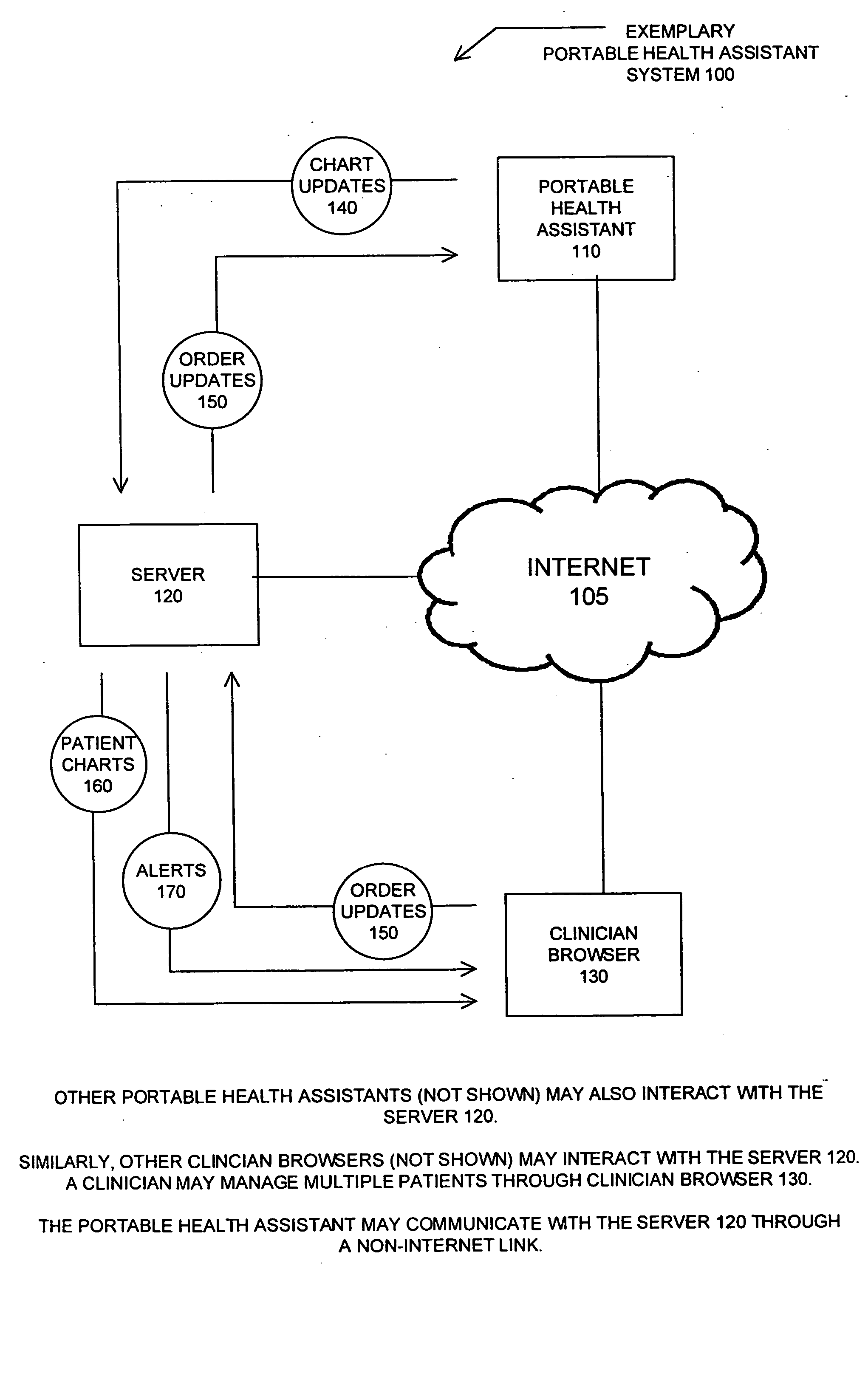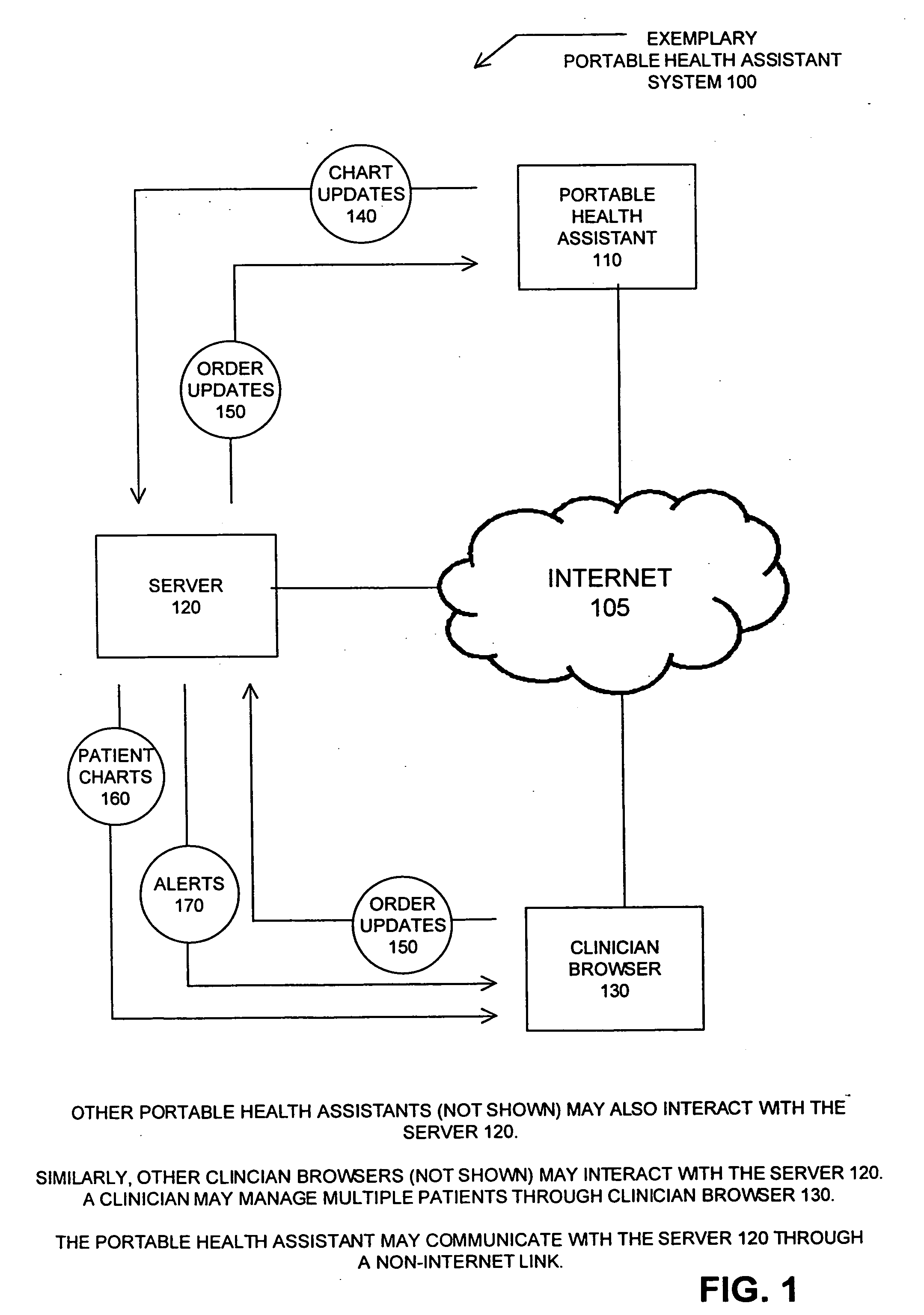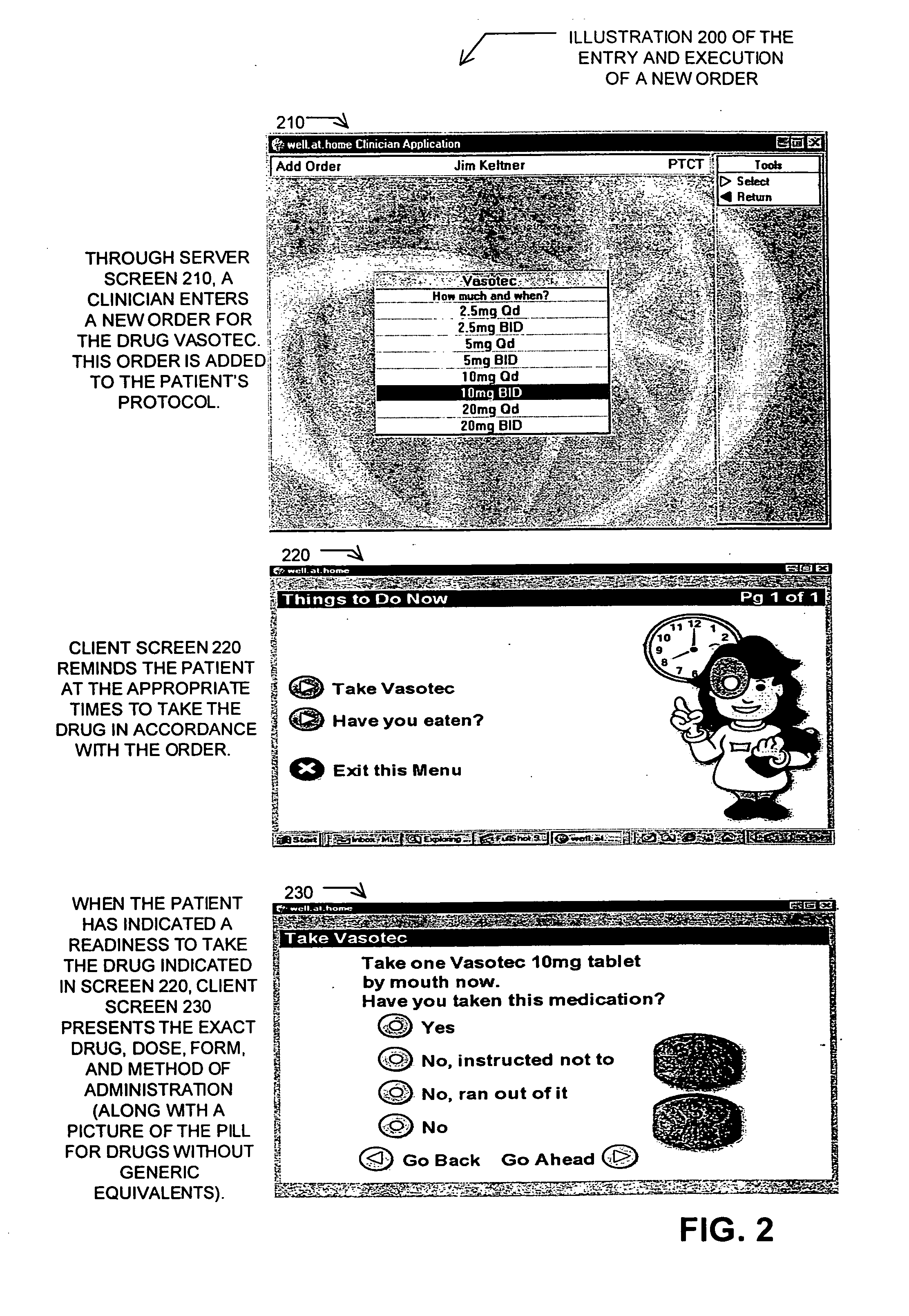Portable health assistant
a health assistant and portable technology, applied in the field of health care, can solve the problems of reduced effectiveness of treatment regimens, complicated treatment regimens, and clinicians' inability to determine patient compliance with treatment programs, so as to improve patient compliance and gauge the effectiveness of treatment programs
- Summary
- Abstract
- Description
- Claims
- Application Information
AI Technical Summary
Benefits of technology
Problems solved by technology
Method used
Image
Examples
Embodiment Construction
[0042] The present invention is typically embodied in a portable health assistant system having a portable health assistant, a computer server remotely accessible by the portable health assistant, and a Web browser through which a clinician can communicate with the computer server. The portable health assistant is a handheld microprocessor-based device with a display screen and a touch screen interface through which a patient can input information. Through multimedia software content, the portable health assistant provides the patient with such features as reminding the patient when to perform tasks in their prescribed treatment regimen, collecting information about the patient's compliance with the prescribed treatment regimen, collecting information about the patient's symptoms, providing the patient with educational information teaching the patient about the patient's disease, instructing the patient how to use a home health monitoring device, and receiving the readings of the mo...
PUM
 Login to View More
Login to View More Abstract
Description
Claims
Application Information
 Login to View More
Login to View More - R&D
- Intellectual Property
- Life Sciences
- Materials
- Tech Scout
- Unparalleled Data Quality
- Higher Quality Content
- 60% Fewer Hallucinations
Browse by: Latest US Patents, China's latest patents, Technical Efficacy Thesaurus, Application Domain, Technology Topic, Popular Technical Reports.
© 2025 PatSnap. All rights reserved.Legal|Privacy policy|Modern Slavery Act Transparency Statement|Sitemap|About US| Contact US: help@patsnap.com



